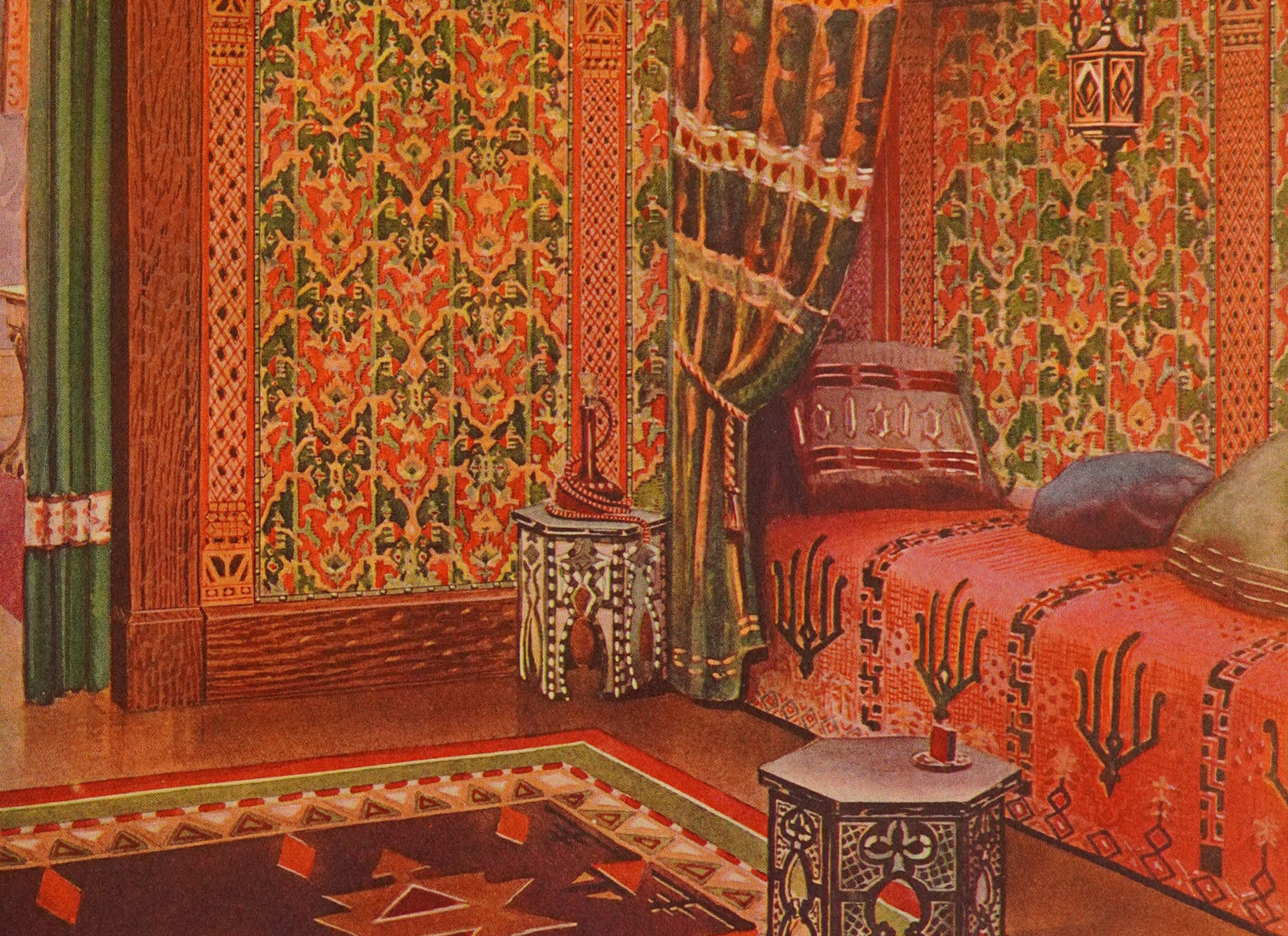
"The fascination for all things Middle Eastern was part of a larger art and design philosophy known as the Aesthetic Movement. It began with the Pre-Raphaelite Brotherhood of the 1850s, grew to encompass William Morris and fellow designers and artists, evolved into the British Arts and Crafts movement, and ended with Art Nouveau in the first decades of the 20th century. The Aesthetic Movement began in Great Britain, but soon spread to other parts of Europe"
"The Aesthetic Movement was, in part, a reaction to the ascendency of the Industrial Age, which dominated both Britain and the U.S. New advances in manufacturing technology and materials meant that factories could produce all sorts of consumer goods that were snapped up by a growing population of middle and upper middle class people. The time-tested art of the craftsman was traded for products made by an underpaid factory worker in a city. It was the beginning of the "more is more" era."
Victorian upper-class homes often included 'Turkish rooms'—parlors or corners filled with throw pillows, overlapping carpets, lanterns, and Near Eastern furniture and accoutrements. The fascination with Middle Eastern aesthetics formed part of the Aesthetic Movement, which traced roots to the Pre-Raphaelite Brotherhood, expanded through William Morris and the Arts and Crafts movement, and culminated in Art Nouveau. The Movement spread from Great Britain to Europe and the United States. The Aesthetic Movement reacted against Industrial Age mass production by valuing craftsmanship over factory-made goods. European imperialism increased exposure to foreign arts and materials, fueling demand for exotic-inspired interior fashions.
Read at Brownstoner
Unable to calculate read time
Collection
[
|
...
]